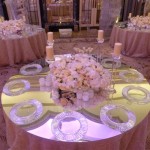How to Cut a Mirror Without a Glass Cutter
Cutting a mirror without a dedicated glass cutter might seem daunting, but with the right tools and techniques, it can be achieved relatively easily. This guide outlines several methods for cutting mirrors without a glass cutter, focusing on safety and achieving a clean break.
Essential Tools and Materials
Before embarking on this project, gather the following items:
- Safety Glasses
- Work Gloves
- Dust Mask
- Measuring Tape/Ruler
- Marker
- Straight Edge (Metal Ruler or a piece of wood)
- Scoring Tool (e.g., Carbide Scribe, Diamond-Tipped Pencil, Nail)
- Lubricant (e.g., WD-40, Kerosene)
- Flat Surface (Plywood or a thick piece of cardboard)
- Pliers (Optional)
Preparing the Mirror and Workspace
Proper preparation ensures a safer and more successful cutting process. These steps are crucial:
- Clean the mirror’s Surface: Thoroughly clean the mirror with glass cleaner and a lint-free cloth. Remove any dust, dirt, or grease that could interfere with the scoring process.
- Protect your Work Area: Cover your work surface with a soft, protective material like plywood or cardboard to prevent the mirror from scratching or chipping.
- Mark the Cutting Line: Using a measuring tape and a marker, clearly mark the desired cutting line on the mirror's surface. A straight edge ensures a precise and even line.
Method 1: Using a Carbide Scribe
Carbide scribes are specifically designed for scoring glass and offer precise control.
- Lubricate the Score Line: Apply a small amount of lubricant along the marked line. This helps the scribe glide smoothly and prevents the glass from chipping.
- Score the Mirror: Place the straight edge firmly along the marked line. Holding the scribe at a consistent angle (approximately 45 degrees), apply firm and even pressure while drawing the scribe along the line in a single, continuous motion. Avoid repeating the score.
- Snapping the Mirror: Align the scored line with the edge of your work surface. Apply gentle pressure on both sides of the score line to snap the mirror along the score.
Method 2: Employing a Diamond-Tipped Pencil
Diamond-tipped pencils, commonly used for etching, can also effectively score mirrors.
- Mark and Lubricate: Similarly to using a carbide scribe, mark the cutting line and apply lubricant.
- Score with the Diamond Tip: Using moderate pressure, score the mirror along the marked line with the diamond-tipped pencil. Ensure a consistent scoring depth for a clean break.
- Separate the Mirror: Use the same snapping technique described in the previous method to separate the mirror along the scored line.
Method 3: Utilizing a Nail (For Small Cuts)
For smaller cuts or simpler shapes, a nail can be used as a scoring tool. However, this method requires more care and control.
- Prepare the Nail: Select a sturdy nail with a sharp point. A slightly duller nail may create a jagged edge.
- Careful Scoring: With light but consistent pressure, score the mirror along the marked line. Multiple passes might be necessary to achieve a sufficient score depth.
- Breaking the Mirror: Gently tap the underside of the scored line with the nail or a small hammer until the mirror separates.
Working with Irregular Shapes
Cutting curved lines or irregular shapes without a glass cutter is more challenging but achievable.
- Score in Sections: Divide complex shapes into smaller, manageable sections and score each segment individually.
- Use Pliers for Small Pieces: Pliers can be used to carefully break away small pieces of glass along the scored lines, particularly for intricate shapes.
- Practice on Scrap Pieces: Before attempting intricate cuts on the actual mirror, practice on scrap pieces of glass to refine your technique and gain control.
Safety Precautions
Prioritizing safety throughout the process is paramount. Always adhere to the following safety guidelines:
- Eye Protection: Always wear safety glasses to shield your eyes from glass shards.
- Hand Protection: Wear protective gloves to prevent cuts.
- Respiratory Protection: Wear a dust mask to avoid inhaling glass dust, especially when working with older mirrors that may contain lead.
- Proper Disposal: Dispose of broken glass pieces carefully in a designated container, clearly labeled to prevent injuries.
Refining the Edges (Optional)
After cutting the mirror, the edges might be sharp or uneven. While not essential, these steps can improve the finished product:
- Sandpaper: Fine-grit sandpaper can be used to smooth out minor imperfections and sharp edges. Wet sanding is often preferred as it reduces dust and provides a smoother finish.
- Filing: A small file can be used to refine edges and remove any remaining sharp points.

3 Best Ways To Cut Glass Without Glasscutter

How To Cut A Mirror Without Glass Cutter 13 Steps

Glass Cutting Trick Without Cutter With A Knife

How To Cut A Mirror Without Glass Cutter 13 Steps

How To Cut A Mirror Without Glass Cutter 13 Steps

3 Ingenious Ways To Cut Glass Without A Cutter Doityourself Com

How To Cut A Mirror Without Glass Cutter 13 Steps

How To Cut A Mirror Comprehensive Guide

How To Cut Glass Without A Cutter Here Is

Cutting Glass With A Cutter Or Without It Learn The Ropes








